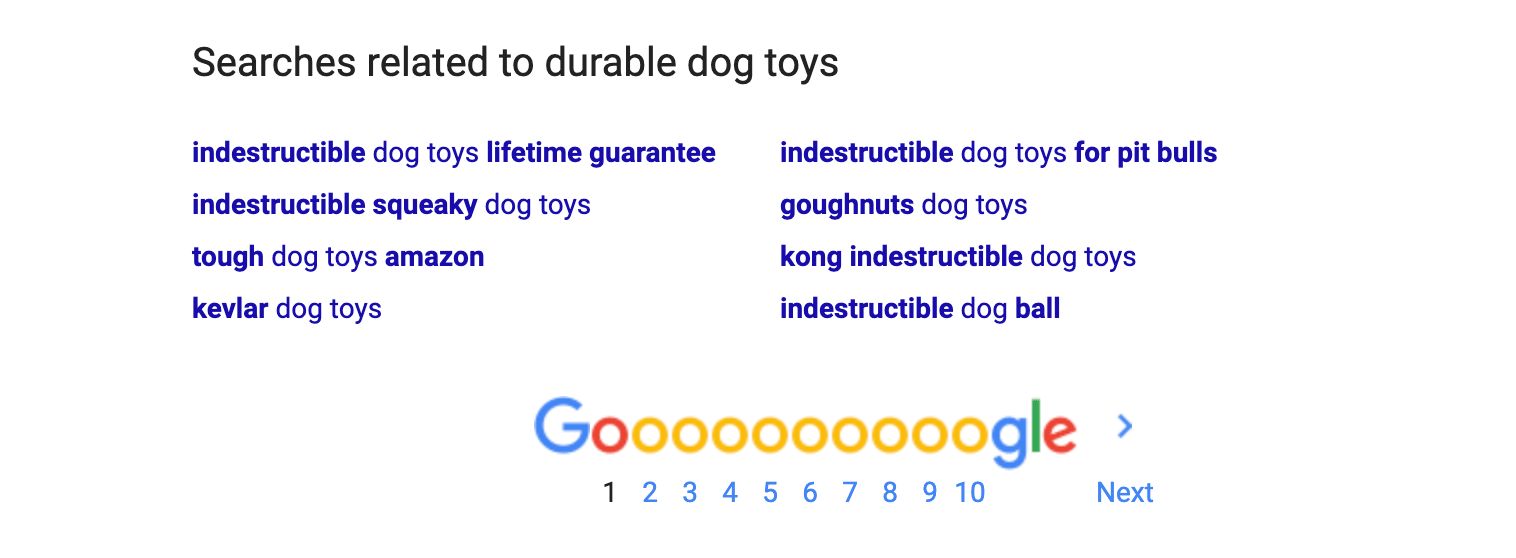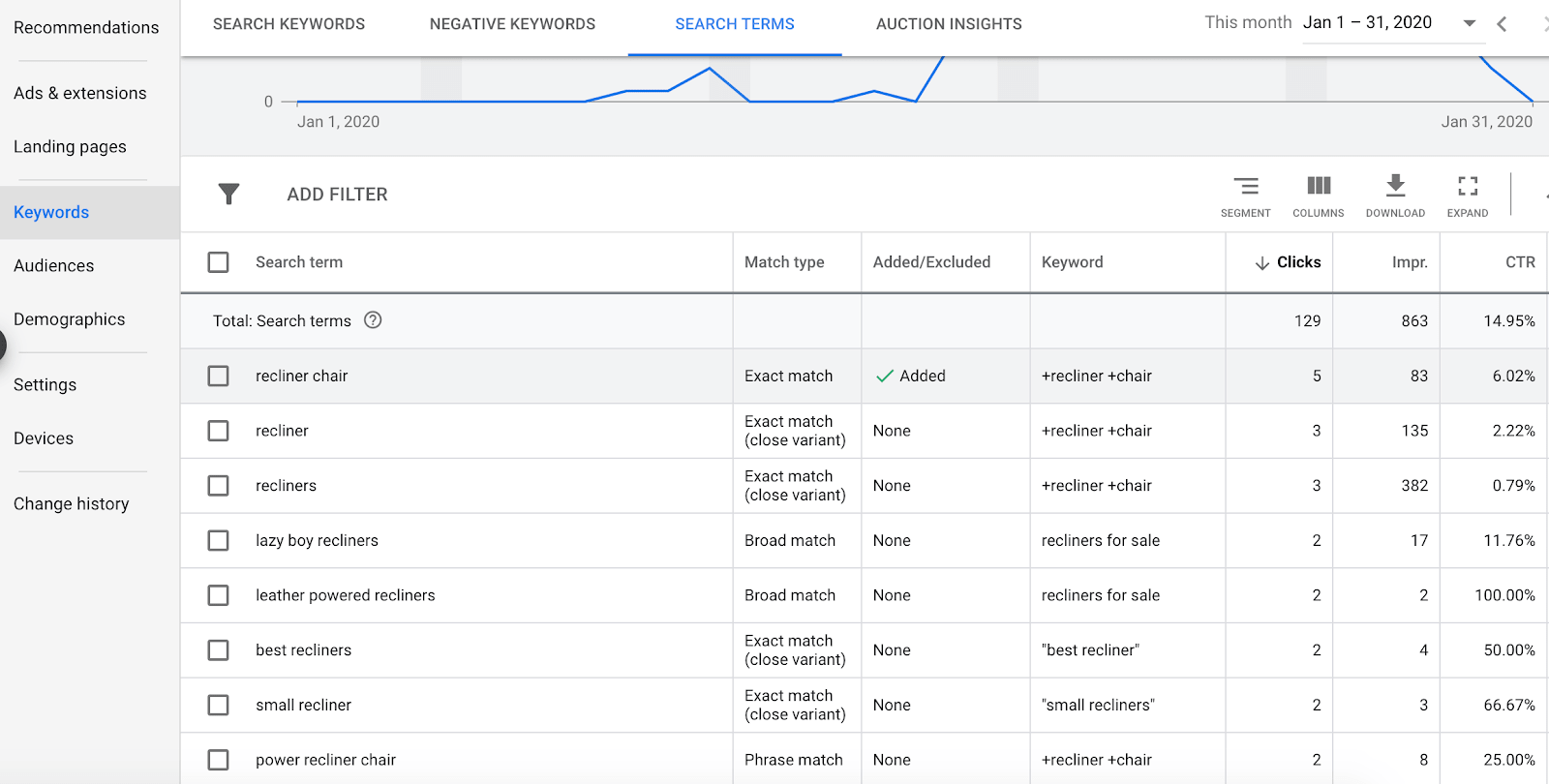Topics:
Search Engine OptimizationJoin 40,000+ sales and marketing pros who receive our weekly newsletter.
Get the most relevant, actionable digital sales and marketing insights you need to make smarter decisions faster... all in under five minutes.
I know what you’re thinking:
Intent research? Really? Yet another fancy term SEO experts cooked up to keep me confused about how to rank my content?
Or maybe you’ve heard of intent research and you’ve brushed it off as another marketing fad that will wear itself out in no time.
SEO is complicated, and I can understand the frustration of feeling like you’re always shooting at a moving target.
As a content trainer, my clients are always looking to learn the secrets to get their content to rank higher on search engine results pages (SERPs), and it can feel like the rules change every day.
But staying up-to-date on these changes is essential to staying on top.
Today, intent-based research is key to making your content reach the promised land of the top of SERPs (where, by the way, the first position gets over 30% of the clicks).
There is no SEO-equivalent of a “get-a-six-pack-in-a-week” solution, but intent research is definitely a concept you’re going to want to know about in order to have long-term success with any SEO, keyword research, or content marketing strategy.
Let’s dive into what it is, what you need to do about it, and some real-life examples and strategies of what it looks like done right.
What is intent-based research?
Imagine sitting down at your desk, pulling up Google in a browser, and typing "coffee mugs" into the search bar. What would you expect to show up?
What you’ll see on the first page is a variety of results: some show custom-printed coffee mugs, how much coffee mugs cost, what the best mugs are, and (my personal favorite) what’s the difference between a coffee cup and a coffee mug.
(If you must know: a cup comes with a saucer while a mug does not, among other things.)
But let's think about this another way. From this search, what is someone able to deduce about the searcher (imagine it was someone else) and what they were actually looking for?
You might think, “They like coffee! And they want a nice mug to drink it out of!” After that, though, your insights kind of peter out.
The thing is, it’s really hard to give specific, honed-in results when you don’t know much about what the searcher is looking for. With such a broad root keyword as “coffee mugs” you don’t have the full context – or intent – behind that search.
What’s that person actually looking for? Where are they in their buyer’s journey?
Maybe they need a picture of a coffee mug for a project. Maybe they need to pick some mugs out for the office, or maybe they’re curious how big mugs typically are and how many ounces of coffee they can possibly hold (hey, we all have those days).
The point is, there are more questions than answers about that person based on a general search term like “coffee mug.”
On the other hand, what are you able to infer from these keyword searches?
- Best coffee mugs under $30
- How to get stains out of coffee mugs
See how you’re able to get a better picture of what’s on that person’s mind and what they’re actually looking for?
Even though the root keyword “coffee mugs” appears in both searches, these are far more specific.
Their intent is much clearer.
An intent-based research strategy takes into account the motivation behind the search.
It gives us more context into the searcher’s expectations, and it enables content marketers to provide the most relevant content, therefore reaching the most qualified readers and prospects.
Why traditional keyword research isn’t enough anymore
You might be thinking: What about keyword research and all those expensive keyword research and tracking tools? Are you saying they’re all pointless?
Not quite. However, they’re definitely no longer sufficient.
For newbies and seasoned content marketers, the goal of SEO has always been the same: rank as high on Google as possible. Keyword research – the process of looking at keyword search volumes and competition level to find the best ones to target – has always been thought to be the best route to achieve that.
However, with Google’s algorithm continually becoming more human-like, that’s not enough anymore. In fact, it could almost be considered a backwards approach for several reasons:
Keyword research focuses on quantity not quality
Traditional keyword research is pretty simple: Look up root keywords related to your product or service, find the ones with the highest volume and lowest competition difficulty, and voila – those are the words to incorporate throughout your content.
-3.png)
However, larger volume keywords aren’t always better.
In many cases, the more traffic a keyword gets, the less qualified the visitor may be for what your company is actually offering.
For example, a niche coffee mug company probably wouldn’t want to target the keyword “coffee mugs.”
The volume is so high and the term is so vague that they’d likely be capturing traffic from many searchers not actually looking to buy. (Remember those folks just looking to get stains out of their cups?)
Volume doesn’t equate to qualified leads. In fact, unqualified visitors who ending up being tricked to land on your site will probably immediately bounce right back off it – increasing your site’s bounce rates and actually making Google likely to demote your SERP ranking.
Instead, it’d be much more beneficial to target a long tail keyword that’s aligned with what searchers are looking for and that overlaps more fluidly with what you offer.
Remember, keyword search volume is not the same as keyword quality.
Even if you have an article that has hundreds of thousands of views, if it doesn’t actually target qualified prospects for your product or service, it’s probably not as “successful” as you may think.
Keyword research doesn’t account for LSI keywords
Top secret confession: I love talking about latent semantic index (LSI) keywords, or keywords that search engines see as closely related synonyms of each other.
You’ll see why I love these in an example below, but selfishly, LSI keywords also give me a chance to talk about the love of my life: my adorable 50-pound rescue pup, Luca.
What if I was to tell you that sometimes, LSI keywords appear in search results EVEN MORE OFTEN than the exact words entered into the search bar? I wouldn’t blame you if you didn’t believe me at face value, so hang tight and check out the example below featuring inspiration from Luca.
Seeing LSI keywords in action
Check it out:
If I search for “durable dog toy” for instance, Google understands what I’m probably looking for: I want a toy that Luca, my 50-pound mutt, won’t be able to destroy in five minutes.
Look at the keywords Google pulls up in the first results (this is something you can see both from paid ads and organic content):
-2.png)
Google uses LSI keywords to automatically pair up the word “durable” with “tough” and “indestructible.”
In fact, indestructible shows up 28 times and durable — the word I actually typed in — shows up only 23 times on the whole page!
This means the specific keyword I type in the search bar matters less than the intent that Google understands is behind the search.
The growing prominence of LSI keywords means Google cares less about the exact words you use when you type in a search query and more about the general gist of what you’re trying to say.
These are more important today than ever because they drill down to the core of the intent behind the search – and search engines are using them more and more.
If that example doesn’t speak to the need to move from a reliance on exact keywords to intent-based SEO strategies, I don’t know what does!
How to optimize for intent:
Okay, so at this point you’re hopefully starting to see why intent is so important for content to be successful in organic search.
In order to make sure your content and SEO strategy accounts for intent, there are a few steps you can take.
Do keyword research, but don’t stop there!
As I like to say, don’t leave the cake half-baked; keep it in the oven until it’s golden brown and delicious.
Kevin Phillips, IMPACT’s lead content marketing trainer, explains:
“While it's cool to rank for root keywords, it doesn't really give us any context into why the person typed that word. That's why I like to scroll through or refine search until I find the keywords that I know what the intent behind them is.”
Typically, this means you want longer tailed keywords, or even full questions exactly as people type them into search engines.
Some keyword research tools like SEMRush, for instance, provide opportunities to specifically look at the questions people are searching for, giving insight into the context behind the root keywords, and better insight into the searcher’s actual desire when searching.
-3.png)
You should factor in the modifiers your prospects use when referencing your product or service so you can better target your audience. Longer tail keywords may have less search volume, but if you consider the right factors, you’ll be more honed into who your audience is.
However, in order to target your audience with any notable success, you need to get to know them.
Get to know your audience and their voice
Jason Linde, IMPACT’s Google Ads lead and paid media specialist, sums it up best:
“The key to intent-based research is to understand your audience on a deeper level. What else are they interested in? How do they talk about it? What vernacular do they use?”
By making the focus understanding the language your prospects use, you’re immediately putting yourself in a position where you can speak directly to them.
As one example, a client of mine builds blast-resistant buildings – structures designed to survive an explosion and keep people safe. However, they realized that most of their prospects inaccurately refer to their buildings as “blast proof” even though that’s not technically true.
Instead of forcing their (correct) language on their prospects, they created some content to directly address “blast-proof buildings” – and explain why they don’t actually exist. Their content is ranking on the first page of Google.
Think about how your prospects talk about their problem and your solution.
What words resonate with them? What are the modifiers they’re using? Who or what are they comparing your service or product to?
Understanding the language and behavior patterns of your prospects and customers is a huge step in taking their intent into account.
Factoring these elements into your content strategies allows you to speak in the same voice as they are, about the same topics they’re looking for.
Create intent-focused content
Intent is all about action, and as a content marketer, you need to understand what content people are looking for when they want to take action.
That’s part of what makes intent-driven content like the “Big 5” topics so powerful. These are blog topics and categories that correlate to strong purchase intent.
Even when you’re looking at your own behavior as a consumer, before you make a purchase of something, there are probably five things you may want to know:
- How much does it cost?
- What are the potential problems with it? (no one wants buyer’s remorse)
- How does it compare with other options?
- What are honest reviewers saying?
- What’s the best option or provider for what you’re looking to solve?
If you want to know these things as a consumer, you bet that your prospects want to know these things about your product or service too.
This makes it necessary to focus your content calendar on the right topics, not just keywords.
If someone is just in the awareness phase, they’re probably looking for solutions to a problem they're experiencing.
If they’re in the consideration phase, they’re researching and whittling down the various solutions.
In the later decision phase, they are vetting the vendors that offer the solutions.
Make sure you’re creating content for each stage of the buyer’s journey so you’re hitting on the natural searches they’ll be making as they move further down the funnel, and, if they’re qualified prospects, hopefully attempt to do business with you.
Pay attention to Google’s related searches
Google does this wonderful thing when you start typing in a search: it gives you other related searches to what it thinks you’re looking for. In other words, it tries to understand your intentions based on things other people have searched before you.
As consumers, we typically might glance at these as we’re typing, and maybe click on one to save us from typing, or we might see one and realize, “Oh! That IS a good question I didn’t think of,” and then click on it.
As marketers, we can also get so much value out of this feature!
Start typing in variations of keywords related to your product, service, or the problem you’re solving, and take a look at the other related search suggestions that pop up under the search bar.

Back to the dog toy example. Before I ever hit the enter button on my search, I can see plenty of other related topics and keywords that Google is telling me are similar.
In addition, if you scroll to the bottom of the SERP page, you’ll also find some related suggestions that can be helpful in coming up with ideas of keywords and intent-based searches people are making on the topic.

Search Query Reports
Google Search Console’s Search Query Reports are a God-send for trying to better understand your buyer’s journey.
You can get a great idea of what the keywords are that actually bring people to your site — instead of working backwards and dictating the keywords that you’d like your prospects to use to find you.
It’s taking traditional keyword research and turning it upside down by looking at what’s actually working, and then devoting more resources in your marketing strategy accordingly.

Be human
Overall, to optimize for intent, it may sound simple, or even crass, but you need to think like a human being.
You may need to do some unwiring of the “strict marketing lingo and keyword research” that you’re used to with keyword stuffing and all the rest.
Think of how you use Google when you’re not at work. You’re looking for clues that a certain search result has the answer you’re looking for.
Create content in the same spirit.
Intent research isn’t just another SEO fad
Remember, keywords are important, and probably always will be.
They’re the most important piece of currency in search.
However, Google isn’t a calculator that’s adding up the exact digits you plug in anymore. It’s a machine that seeks to understand what searchers are looking for so it can provide the best results.
As Jason Linde says, “Google wants user experience to be phenomenal.” Effectively and efficiently answering a user’s intended questions is a huge part of creating that level of experience.
Users more and more want brands that feel like they offer a personalized solution.
As I tell my content clients: Don’t aim to please Google, aim to please the user.
Google’s algorithm is a moving target, but it’s always moving closer and closer to being human-like. How much effort could you save yourself by just aiming to please the user – as opposed to the search engine – right off the bat?
To be fair, there is plenty of overlap. That’s the point. But if you incorporate the basic best practices of search engine optimization with an intent-focused content strategy, you’ll be in really great shape.
At the end of the day, though, we can’t accomplish this if we’re not taking the time to listen and get curious as to what our prospects are asking for.
In other words, if Google is always trying to better understand the intent behind people’s searches, so should you.
Free: Assessment

